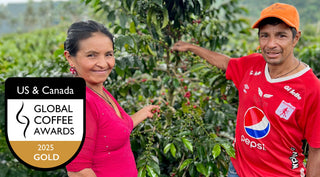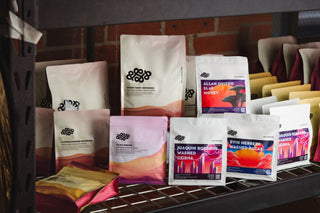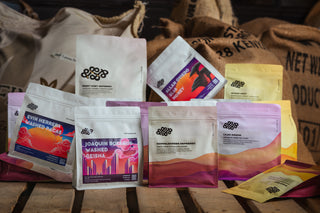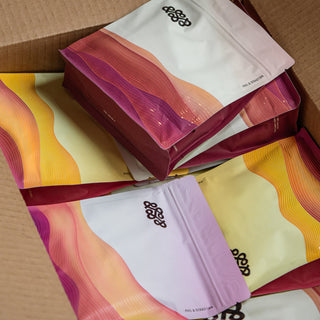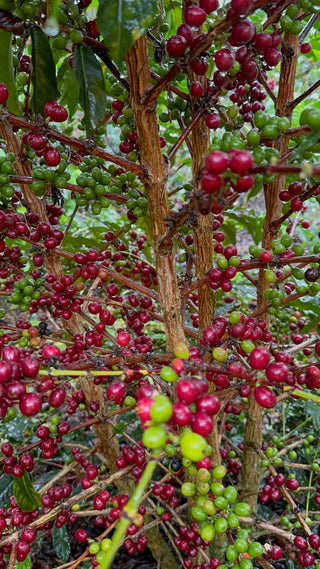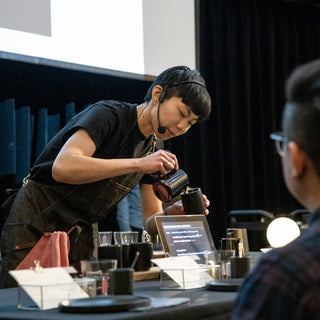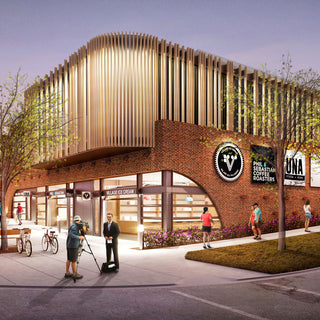At the end of a great day spent with the Petersons at Esmeralda, we took the up-and-down 90-minute drive from Boquete to Volcan to visit a good friend, Carlos Aguirre from Carmen Estate. When we arrived, he warmly welcomed us with a nice bottle of wine, cured meats and cheeses. We had a great visit and also had the pleasure of meeting Ratibor and Tessie Hartmann of Finca Hartmann in nearby Santa Clara.
In the morning, we jumped on Carlos’ 4×4 Yamaha and set out to explore his farm, which starts at 1700m and is just under 2000m at the top. His farm is comprised of young caturra trees, which he religiously stumps every 7-8 years. His farm is a great example of the many microclimates that one can find in a high-elevation coffee farm. Carlos employs cherry pickers from the indigenous Ngobe-bugle tribe. It is commonplace for Gnobe to work as a family, children included. But both Carlos and the Panamanian government agree that children need a proper education (child labour is outlawed in Panama), so Carlos has setup a small school and hired a Gnobe instructor to teach the kids.
In the afternoon, we took the very scenic drive to Finca Hartmann, where we cupped a number of coffees with Ratibor and Carlos. Two coffees stood out from the pack, the first was Carlos’ coffee from Carmen, a lot from the 1800m portion of his farm and the second was a Gesha from Hartmann, arguably one of the best coffees we’ve tasted all year.
We spent the rest of the day, touring the Hartmann farm and their mill. It is truly an impressive operation. The Hartmann family consists of four brothers and a sister, all of whom live on the farm and each has a distinct function in the farm. We spent the most time with Ratibor, who is truly passionate about every aspect of coffee. He has recently acquired a Brix meter (to measure sugar content) and has been doing experiments to understand which conditions (sun, varietal, soil) produce higher sugar concentration in the coffee cherries. This is quite innovative, since most progressive producers who have used sugar meters have traditionally used them to determine the best time to pick the coffee cherry off the tree (which is very valuable on its own). Ratibor and his brothers are extremely meticulous about their coffee agriculture and processing and they have made Finca Hartmann a true example of sustainability. The more time we spent with Ratibor the more we found in common: passionate, curious about coffee, dedicated to the pursuit of quality, and a real student of coffee.
He then showed us how they process their honey coffee (honey refers to leaving some fruit on the coffee bean and letting it dry in the sun) and we quickly learned that they use a great deal of logic in deciding when and how they process their coffee using the honey method (as opposed to fully washed). We learned that to obtain a good honey preparation, the coffee must be exposed to a good deal of sun in the first three days of drying. So, if the coffee is ready to be harvested but the sun is not cooperating, the Hartmann’s do not process their coffee as honey, they use the traditional washed method. So, this level of discipline ensures that the Hartmann’s achieve a controllable honey preparation consistently and it also means that their annual production of honey coffees heavily depends on the weather (availability of sun). Another element in their honey processing that was impressive is the fact that they dry the honey coffees in covered raised beds under the sun, but unlike many others, they only have a layer of coffee that is about ½” deep. This allows for proper drying, good airflow and prevents the formation of ferment, which is something that plagues many honey coffees.
Our visit at Hartmann ended with a tour of their Palo Verde farm, which is located in a rainforest. It is difficult for photos to capture the landscape: rivers and creeks, wild trees with 2 ft2 leaves, trees that look like out of a Tarzan movie, banana trees, and nestled in between of course coffee trees. I could keep writing about all the other sustainability activities that the farm is undertaking, but this post would suddenly double in size.
The post Panama Part 2: Carmen and Hartmann appeared first on Phil & Sebastian.

